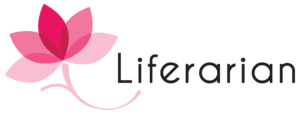
Photo by Marta Dzedyshko (Pexels)
Curating a school library collection demands a thoughtful and dynamic approach, one that is constantly evolving to meet the diverse and ever-changing needs of the school community. This process is not just about filling shelves with books; it involves a deep understanding of the educational goals, interests, and cultural backgrounds of students, teachers, and parents. A well-curated collection supports academic success, fosters a love of reading, and reflects the values and aspirations of the entire school community. For librarians aiming to enhance their collection, this multifaceted task requires continuous learning, collaboration, and strategic planning.
As Neil Gaiman eloquently stated, “A library is a place that is a repository of information and gives every citizen equal access to it. It’s a community space. It’s a place of safety, a haven from the world.” Embracing this philosophy, here is a recommended process for librarians dedicated to curating an exceptional library collection:
Understanding the School Community’s Needs
The foundation of a successful library collection lies in understanding the unique needs of its users, including students, parents, faculty, and staff. Librarians should:
– Conduct Surveys:
Regularly gather feedback from students and staff about their reading preferences, subject interests, and resource needs. Utilize platforms like Google Forms or SurveyMonkey to create and distribute surveys.
– Collaborate with Teachers:
Work closely with educators to identify resources that support the IB curriculum, enhance classroom learning, and align with current educational standards.
– Monitor Circulation Data:
Analyze borrowing patterns and trends to identify popular genres and frequently requested materials. For example if you notice a drop in circulation of your science fiction section, you might want to showcase the books with a new science fiction display or consider upgrading your science fiction collection with newer books.
Offer spaces or platforms where students can share their voice and choices to build the library collection.
Staying Updated with Trends
To keep the collection relevant and engaging, librarians must stay abreast of current trends in literature, education, and technology. This involves:
– Reading Reviews and Recommendations:
Keep up with professional journals, book reviews, and recommendations from reputable sources like the School Library Journal, Booklist, and Goodreads.
– Attending Conferences and Workshops:
Participate in library and education conferences to discover new resources, learn about emerging trends, and network with other professionals. The Liferarian Association’s annual conference is a great platform where fellow librarians share their resources and how they merge activities to bring those books to life.
– Following Publishers and Authors:
Stay informed about upcoming releases and trends by following news from publishers, authors, and the book industry. For example, what are some new releases at Penguin Random House India, Karadi Tales and international publishers like HarperCollins, Scholastic etc.
The Selection Process

Photo by Pixabay
Curating a collection is a balanced blend of art and science. Here’s a detailed look at the selection process:
- Identifying Gaps and Priorities:
– Curriculum Needs:
Prioritize resources that support the IB curriculum, including subject-specific texts, study guides, and materials that promote inquiry-based learning. For example to meet the needs of social studies, here is a recommended reading list to support SDG Goals
– Diverse Voices:
Ensure the collection reflects diverse perspectives and cultures, providing various voices and experiences. Follow platforms like Good Reads and other websites that offer book suggestions and authors that express diverse voices.
– Student Interests:
Add books that cater to students’ interests and hobbies in all genres.
– Interactive and Multimedia Resources: Expand the collection to include audiobooks, educational software, and interactive e-books that cater to different learning styles.
- Evaluating Potential Additions:
– Quality and Relevance:
Assess the quality of content, relevance to the curriculum, and the potential impact on students’ learning experiences.
– Reviews and Recommendations:
Consult reviews from trusted sources and consider recommendations from teachers, students, and library staff.
– Author and Publisher Reputation:
Consider the credibility and track record of authors and publishers, especially for non-fiction and educational materials.
-
Acquisition:
– Budget Management:
Allocate the budget wisely to ensure a balanced collection that covers various subjects, genres, and formats.
– Vendor Relationships:
Work with reliable vendors and leverage library consortiums to obtain the best prices and access a broader range of materials.
Weeding and Updating
Maintaining a vibrant and valuable collection also means regularly evaluating and updating resources. Librarians should:
– Weed:
Remove outdated, damaged, or seldom-used materials to make space for new acquisitions and ensure the collection remains current and relevant. Check out AASL’s article on weeding to help your collection grow.
– Update Editions:
Replace older editions of essential texts with the latest versions to provide students with up-to-date information.
In conclusion, curating a library collection is a dynamic and collaborative effort that involves staying informed, understanding the community, and making thoughtful decisions. The goal is to create a library that supports academic success and inspires a lifelong love of reading and learning. While many librarians already embrace these practices, this serves as a gentle reminder to continue the process to maintain a robust, relevant, and inspiring collection that truly meets the needs of their school community.
by the Editorial Team

